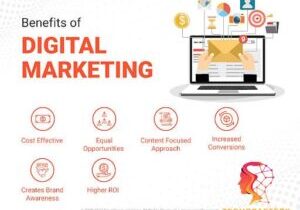Perfect Branded Website for Your Business

Perfect Branded Website for Your Business’
How to Create the Perfect Branded Website for Your Small Business
Most of us know that creating a website is a fundamental part of any small business strategy. A website establishes your company’s online presence and is an important resource for attracting leads and guiding customers through the sales funnel.
While a website is meant to transmit practical value about your business and your brand, it’s also the place to build emotional connections with your target audience. Your website’s look, feel, and personality are just as powerful as the information on your site when it comes to drawing in prospective customers.
The secret to crafting an online presence that intuitively resonates with your audience is to create a branded website. You can think of a branded website as your business’s personal profile, with a combination of visuals, colors, and strong written copy that together create a cohesive picture of your brand’s personality.
Your website is often the first thing potential customers see. With stellar website branding, your site quickly and easily communicates what your company is about, what you stand for, and what you offer. Here, we’ll outline basic strategies for creating a quality branded website so you can put those tips to work with our simple website builder.
Why branding your website is important
Website branding may well be a potential customer’s first interaction with your company. Think about it: When you’re interested in buying something, one of the first places you go is to an internet browser to search for that product. And if someone finds your website in a search and clicks on it, they’ll see your homepage or landing page. That’s where your branding will first appear, and what your brand tells potential customers could prove to be a make-or-break factor when it comes to sales.
The impact of website branding goes beyond your website, which is just one part of your larger internet presence. The management of your social media pages and blog content also play an important role in how your company is perceived online. Branding consistency across these digital channels, not to mention your actual products, enhances your company’s public perception and reputation. Both this overall perception and the initial glimpse of it on your website can build connections and trust with customers.
7 tips on how to create a quality branded website
To fortify your connections with customers, make sure your website branding checks all the following boxes:
1. Define your brand and make a logo before designing your website.
A brand is more than a logo (though logos are a big part of branding!). Your brand encompasses your company’s core values and clearly communicates your message and what you do.Creating a brand involves a comprehensive process that goes beyond logo design. It includes strategies like online reputation management, brand awareness initiatives, and more. A logo is vital for a branded website, but it’s just a part of the overall branding process. Other key strategies involve crafting a unique brand voice, maintaining a consistent visual identity, and building a robust online presence. A comprehensive approach ensures a strong and recognizable brand that connects with your target audience.
Identify core values, establish desired reputation, then design a logo reflecting both. Ensure website content and visuals align with these values, featuring the logo prominently on every page. Consistency reinforces your brand message. It’s especially important to display your logo at the top and bottom of each page. Before you do that, though, you should figure out how the rest of the page will appear.
2. Craft your brand voice.
Brand building extends to language choices on your website, business cards, and collateral. Consistent language reinforces your brand identity across various touchpoints.That’s where brand voice comes in.
Your brand voice may prioritize the use of words and phrases that excite or inspire customers. It could also seek to convince customers that your company is uniquely qualified to address certain pain points. It could even comprise words and phrases that elicit feelings of luxury or sophistication. There’s no such thing as an incorrect brand voice. As long as your voice reflects your values, matches your products, and is applied consistently throughout all your brand’s touch points, you’re doing it right.
Find inspiration in Slack’s team communication software for its friendly brand voice. Website content, like the chatbox, is inviting and playful, making it a helpful companion rather than just software. Example: “Want to know something cool?” prompts engagement.
After you create a brand voice for your company, you should ensure that all content on all your website pages meets your brand voice guidelines. To do so, you’ll need to decide exactly what kinds of writing your website will contain.
3. Determine which types of written content you’ll include.
Some websites include only a homepage, a page with a list of services, and a contact page. Others include a homepage alongside many additional pages for the brand story, individual services, staff details, contact information, blog entries, and more. Each page you include is an opportunity to elevate your brand and unify how it appears across all channels.
Of the above content types, blogs and brand stories are perhaps the best ways to make your brand voice concrete. Your website’s blog is a space where you can write — in your brand voice — about all kinds of topics that pertain to your audience. Blogs are also great for content marketing, as people reading them may realize that their interest in the topics you’ve covered means they should keep paying attention to you.
Your brand story is just as powerful for branding. because brand stories tell customers how you identified a problem, solved the problem, and benefited from the solution — and think others can do the same. These bits of information all attest to your values, meaning they put your brand front and center. What a seamless way to combine your website with your brand — especially if you make it all look great.
4. Use right visuals.
For effective website branding, you’ll want to create a website that smartly, carefully implements the following elements: For effective website branding, you’ll want to create a website that smartly, carefully implements the following elements:
- Templates or themes. Many business websites start from templates or themes which guide how your content looks. Once you choose a general look and feel that you like, this template or theme can be customized with your brand’s colors, content, photos, and more.
- 5. Be mobile-friendly.
- In 2020, 68.1% of website visits were mobile rather than desktop, and search engines now prioritize mobile view over desktop view. Ensure that your website is responsive, which means that it adjusts automatically to whichever screen size people use to view your website.
- 6. Minimize text.
- Often, website visitors leave after 10 seconds. That’s certainly not a lot of time for someone to read text. Instead, your goal should be to make as strong and quick an impact as possible. Replace big blocks of text with short phrases that more succinctly make the point. This way, your most important messages get across quickly.
- 7. Optimize your website.
- Search engine optimization (SEO) practices help your website rank more highly in searches for terms that relate to your company. By including such phrases on your web pages and especially in your blogs, you show that your values align with the search in question. SEO is thus as good for increasing your website exposure as affirming your brand.
- Brand your company, then your website
- Once you develop your company’s brand, you can shape your website to reflect your core values. Crafting the items you need to advance your brand is easy when you use Namecheap’s brand design maker. The Namecheap Visual design suite transforms your needs and ideas into business logos and websites that reflect your values, plus it requires no graphic design experience. It’s the easiest way to show your new customers what makes you special.










[…] (a computer software application that manages the digital content of a website) you can learn how to make a website and make updates without the knowledge of using code. Techcraftery is an example of a CMS, which […]